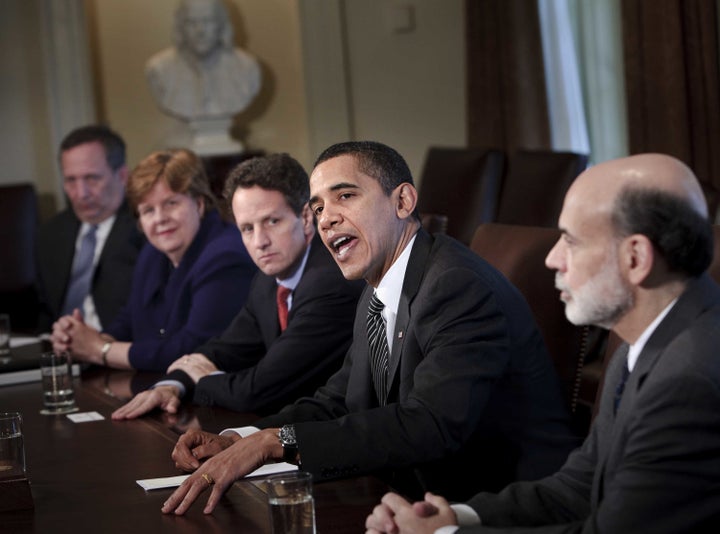
What if you were worried about your heart and your doctor said he wanted to perform a "stress test" on you - then he sends you home to fill out a questionnaire. Upon returning the questionnaire, you steel yourself for the physical exam, the EKG, the treadmill, and all the other stuff you've been reading about. But he quickly looks over the questionnaire, blesses you with a clean bill of health and says good-bye. Would that feel right? I hope not.
But that's exactly the approach we're taking with the banking system. As if we can just think this problem away - if we close our eyes and don't think too negatively, the problem will subside. That is: feeling OK is the same as being OK.
Last week at the Milken Institute Global Conference, this theory was illustrated for me in living color - literally. Certain things were "on the table" for discussion - such as when real estate prices would return to their glory days and when the financial boom of yesteryear would return. But the question of if they would was unspeakable; asking such a silly thing felt gauche. This terrible slump we're in is just a momentary condition, they said. And reliably, every time I saw a PowerPoint slide with a graph that endeavored to project the next few years of economic activity, there was a beautiful upward ramp (usually green or blue) just around the corner. I saw it so much that I started calling it "The Blue Phoenix."
No one thought it was funny.
Now, while we all hope it's true, we must also be responsible enough to entertain the idea that it may not actually be true. If we don't, we are just being delusional.
And the methodologies used for the bank stress tests are delusional indeed.
In the model, banks are "asked to estimate" and "instructed to project" losses for "baseline" and a "more adverse" economic scenario. The "more adverse" scenario is the Federal Reserve's version of a worst-case scenario. That scenario has United States GDP growing by 0.5% next year. That's right, folks - when it comes to conceptualizing how badly things could go over the next eighteen months, 0.5% growth actually represents the outer bounds of the Federal Reserve's imagination. That ought to disturb all of us.
To be fair, the Fed says in the white paper that the "more adverse" scenario it is not intended to be a worst case scenario - it's just supposed to be "severe but plausible." In other words, it's the worst scenario they are willing to entertain in pleasant company.
Further, the Fed says analysis is intended to be "...forward looking [with] losses and resources projected over a two-year period." I'm reminded of the absurdity of the media and marketeers fawning over Bernanke's optimistic remarks yesterday. Given that Bernanke, the Fed, and the big banks never saw any of this coming, we're now expected to rely on their ability to predict the future? This, when we know the banks themselves are basically authoring the test results?
Further, the tests mostly overlook derivatives - the $50 trillion elephant in the room - by essentially letting banks apply their prior calculus in valuing them.
Shall we rest soundly on their collective optimism, especially in light of their track records?
Here's the truth: many of our largest banks are insolvent, and their only hope for recovering is for the US economy to stage a roaring comeback - indeed, an unprecedented comeback - and to do so very quickly. While we all want that very much, we also need to accept that it's exceedingly unlikely.
More truth: The FDIC has about $50 billion in reserves - ostensibly insuring 8,000 banks and more than $7 trillion in customer deposits. Just the top 150 banks have deposits exceeding $2 billion each. Hundreds of institutions sit on the FDIC's internal list of troubled banks. Probably ten to twelve of the big banks will need to raise more capital.
Additionally, several of the largest banks have exposure to derivatives that exceed their total assets - in some cases, they exceed a given institution's asset base several times over. No amount of rosy projection is going to change the reality that a very large number of these contracts will ultimately turn out to be worth nothing - that's right: $0.
So, the remaining question is: where is all that money going to come from?
The answer: probably you.
How's that heart feeling?
